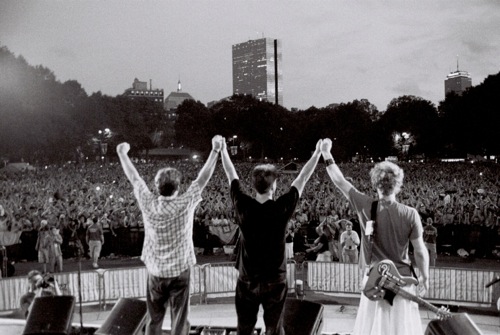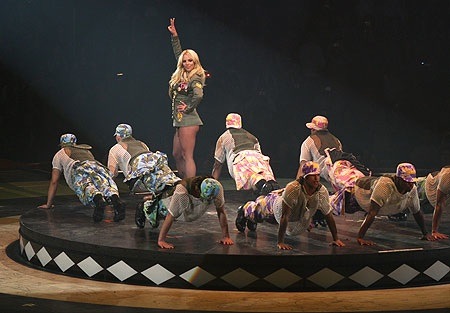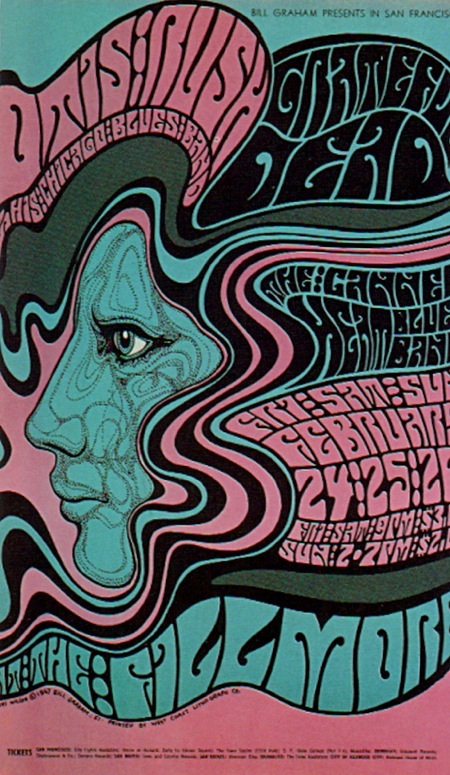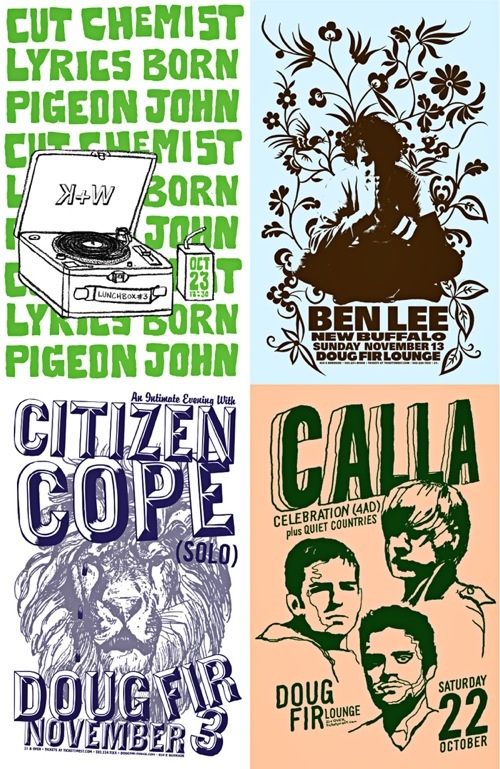
1) Choose The Right Venue
Every venue has its own style, and is known for showcasing music of specific genres. Some venues are known to hold rock concerts, other are known for hip-hop, so on and so forth. It all comes down to the location, and the surrounding music scene. Picking the right venue for your gigs is very important, as is the first step towards growing your core fan-base, which will ultimately increase the attendance at your gigs. If your not playing to a crowd who won’t absolutely love your music, then you haven’t targeted your audience correctly.
As with any well thought-out marketing strategy, the first important step in promoting yourself and building your brand is knowing who your audience is. If you are trying to build a core fan-base, you better be sure you know who that crowd will consist of. If you are playing acoustic folk/rock, don’t play in a club for people who are looking to dance to reggatone. The same thing goes for hip-hop artists- don’t play in a coffee shop filled with art students who listen to indie rock.
So how do you target your audience? Start by asking yourself some basic questions such as:
-What kind of music are you playing?
-What is the demographic of your audience? (i.e. age group, sex, style)
-What kind of music is popular in your local music scene? Does this match with your style of music. If not, where does it match?
-What are some of the big, mid-size and small venues in the local area that do cater to your style of music? (its good to set yourself some goals)
-Of the popular venues, which has the largest gathering of your target audience?
-What are some of the bigger local bands involved in your specific scene?
Even some more detailed questions such as:
-Will your target audience want to dance?
-Does your target audience like to drink? (If so, find places with drink specials!)
-What other kind of music does your audience listen to?
-If were to mix in some covers into your set, what bands would your audience want to hear?
-Where is your audience involved outside of the live music scene? Do they follow any specific blogs or belong to any specific social networks?
Every additional question you ask will get you one step closer to finding just who your audience is and how you can establish a connection with them.
Once you have determined who your audience is, find the most suitable venues and do everything in your power to book gigs there. Don’t forget to look past the venue as well - take a look at their calendar and contact artists who cater to a similar audience. Booking an opening gig can be a very helpful way of getting your foot in the door at some of the venues that are harder to get in touch with.
NOTE: Notice the focus on being ‘local’. As a new artist trying to establish a core fan-base, you don’t want to spread yourself too thin. Make sure you have established yourself a home base of fans before you go elsewhere. Begin with a radius around where you live, say 20 miles. It is not until you are able to hit max capacity at the venues within this radius that you should begin looking to expand your reach.
2) Keep It Varied
Creating a format for your live shows is very important, but it also important to keep the sets themselves varied. You need to make a few decisions:
-one set or two?
-fully electric sets or do you include an acoustic set?
-how many covers will you do? Will they be a regular part of the show?
-will you play the same music every time, or will you drastically change up the sets?
-will you speak with the audience?
-will the audience be able to participate in any way? If so, how can that be duplicated. While you want variety, you need that constant element as well.
All of these components are important decisions to make when creating the format for your live performance. Just as your image and your music is part of your brand, so is the format of your live performance. Entertainers like Brittany Spears and Lady Gaga are known to have extravagant performances that are fully choreographed and synced-up with the music.

They play one set of music straight through and the set-list never changes. Then there is the extreme opposite- bands like the Grateful Dead and Phish have always been known to play a format of two sets with a half-hour to 45 min. break in between. While the format remained consistent, it was the set-lists that were always different from night to night. Not only did this keep it interesting, making it so fans had no idea what would be played each night, but it added an additional layer of fandom to the mix, allowing the more obsessed fans to keep stats on which songs were played on which night and how many times per tour, which songs came before and after a song and the probability of that happening again, etc, etc. It is this kind of varied live performance that kept people coming back, allowing both The Dead and Phish to become two of the highest grossing touring acts in music history.
But maybe that type of a show is not for you or for your audience. Set-lists don’t HAVE to change from night to night, nor do new covers and/or new music need to be introduced or revisited at every show. The point here, is that your audience can already get your music from the recordings. So if you want to grow a fan-base that is willing to come out and see your perform live, you need to do something that sets your live show apart from your recorded music- it always comes back to adding value for your fans. If you are not doing something in a live setting that adds value for your fans, then they have no purpose for attending your shows.
3) Promotion
Promotion is the most important part of getting people to your gigs. During your first few gigs when no one knows who you are, it is your job to make sure that everyone in the surrounding area knows about your show. Once you have an established fan-base, it then becomes your job to make sure the existing fans know of the show and are given the proper tools to help you spread the word.
Starting early is the best way to promote a show- don’t wait until 2 days before and think that your promotion will penetrate through to the public. There have always been traditional methods of promoting a show (i.e. posters, fliers, cards, etc) but social networks present an even more effective way of promoting your upcoming events in a way that allows fans to gather and create buzz, ultimately spreading the word by inviting others. The more people that spread the word, the more opportunity you have to host a sold-out show.
Just because social networking has made it easier for artists to connect with fans, doesn’t mean you can just take the easy way out. If you create a Facebook event, then just sit back and expect people to show up to your gigs, you will have another thing coming. You should still be using all of the traditional methods of promoting a gig to supplement your online efforts. Create fliers and posters and make sure they are strategically placed around your town, campus, restaurants, local stores and hang-out spots. Placing 100 fliers around town is great, but if they are all on side walls and in back-alleys, no one will see them and you have wasted your time. Partnering up with some local hang-outs, ones that are involved with the arts, or cater to a similar crowd that you are trying to attract is a great way of spreading the word. And whatever you do, do not, I repeat, do not make a flier that is hard to read. I know it is easy to succumb to the temptation of creating fliers reminiscent of 60’s psychedelic era, with all of that cool, trippy artwork and all those crazy colors:

STOP! No one wants to have to decipher a flier - make it clean and legible.
Use large block font and make sure it gets the point across (name, where, when, how much, special guests?, drink specials?, etc.). If you do want to include artwork, making the flier look a little more interesting, make sure the name is the centerpiece. If the name gets lost, the promotional capabilities of the flier will be wasted. 
Using sites like Facebook and Twitter are great for promoting upcoming concerts. They offer the ability to reach large groups of people at the click of a button. But more importantly, they allow you to connect with your target audience in a way you were previously unable to. Facebook is the biggest social network in the world, but it is extremely general hoping they can cater to every possible aspect of life. While Facebook isn’t deep enough to cater to the specific needs of musicians, there is no reason why you shouldn’t be working on Facebook to connect directly with your audience. Create an event page, and start contacting people. Invite close friends, but don’t be afraid to ask for help. Find groups that cater to your audience and begin networking there as well. Create the most robust event page possible, using all that the Facebook pages allow for and then add more value by linking to other pages. Maybe offer all those who join the Facebook event a free download of your EP.
Don’t forget that there are a limitless amount of blogs out there as well. Music blogging has become very popular, and some blogs even have traffic that reaches hundreds of thousands of visitors per month.
Use this information to get yourself prepared for performing live. Becoming a gigging band can be the best way to grow your brand, ultimately helping you achieve whatever level of success you are looking for. But without a proper plan of who you are trying to attract, how you are going to attract them, and then actually attempting to do so, you will see yourself falling short each and every time.
One of the most widely unanswered questions that every emerging artist asks is ‘how do we get people to our gigs?’. The truth of the matter is there is no one way to get people to attend your shows. Some people may struggle for years, some people may find success right away. But once you have prepared yourself for performing live, there are strategies that can help increase the chances of achieving that first sold out gig. The following are 4 strategies for creating awareness and long-term engagement:
4) Invite the press
One of the most simple ways to gain publicity is to invite the press. While this is one of the most commonly overlooked methods of establishing a name for yourself, it is also one of the easiest to do. Many artists see creating a press kit as a way to book a gig- the musicians version of a resume. But a press kit is also used as a way to attract press to your show, to ultimately cover your performance, attracting new listeners who are looking for the kind of music you play and/or the kind of show you put on.
The press that comes to your performance does not need to represent the largest publications - just try to contact Rolling Stone about your gig in nowhere U.S.A. But you can, and should contact the local paper, the school paper or any other form of school publication, local music bloggers, local arts magazines, etc. The more angles you can think of to bring the press to your shows, the better off you will be.
5) Create buzz
Nothing is more helpful than creating buzz around your brand. If you are still a relatively unknown artist, the best thing you can do is to get involved with the already established music scene. Find out if there are any upcoming music festivals, showcases or Battle Of The Bands in your area that involve some similar acts who cater to a similar crowd and get yourself involved. This will help expose you and your music to a new audience and will create buzz- everybody loves a new ‘breakthrough artist’.
While playing the most popular venues is the best way to grow your fan-base, it is the smaller, alternative venues such as coffee shops and restaurants and public events such as festivals and fairs that will help you initially connect with new fans. Playing these alternative venues will allow you to expose yourself as an artist to a crowd of people who may not have heard about your last show, while generating talk about your next one. But remember, one of the most important things to always think about it is ‘who are you trying to attract?’. You will be wasting your time, talent and potentially money if you have established your fans as smooth Jazz lovers but you are playing at an upbeat sports bar/ grill in a college town.
Networking with the local artists is also a great way of generating some buzz. Do some research and find out who the bigger acts are within your local scene and get in touch with them. Find out when they are going to be playing in the area, preferably at a venue you have already performed at, and try to book the opening slot. Even more, you should try to book these opening slots strategically around when you have upcoming performances. Performing as the opener for a major local band a week before your own headlining show is a great way to increase attendance at your next gig.
6) Create A Mailing List
A mailing list is extremely important. Playing those opening gigs and small alternative gigs are great, but without establishing a way to directly contact those new fans at a later date, not much has been gained. You need to be able to reach new and even existing fans directly with important updates about new gigs, new music, last minute changes or even personal week-to-week updates. You can promote all you want on Facebook, but when it comes down to the last day or so before a gig, you need to be able to give a reminder to your fan-base that your performance is tonight, at such and such a venue and this time- so don’t be late! Oh, and bring your friends! (And for any place that has a bar, always remember to mention the drink specials!)
And believe it or not, but some people just don’t care much for social networking. It seems ridiculous in today’s tech savvy world- but its true. You cannot depend on social media to be a completely solution. Using a mailing list is a great way to reach ALL of your fans in as personal and directly a manner as possible.
7) What you do off the stage is just as important as what you do on the stage
By now, you should have a pretty good idea of what you need to do in order to increase attendance at your gigs. But there is one rule that can outweigh the importance of all the rest if done properly: What you do off the stage is just as important as what you do on the stage. If you are performing only once a week, or once every few weeks, yet are not getting in touch with your fans in between that time, how do you expect your fan-base to grow and your attendance to increase? After all, creating a fan-base is truly priority #1 and you should be doing all that you can to grow that fan-base as big as possible. Any value that can be created for fans off the stage, should be. There are ways to use social networking and blogging to connect with your fans on a regular basis, breaking down barriers and allowing them a glimpse of your personal life.
But there are also other promotional ideas that will help as well - free downloads of past performances, sweepstakes and competitions that revolve around your music or your band name (i.e. post up a lyric from one of your really old songs, and ask your fans to guess which song its from. The winner gets a free download of your recent album). I will say it again because it is worth repeating- anything you can do that your fans will find of value, should be done. Fans are looking for value from all angles and any stone left unturned will just become a weak spot in your promotional campaign as an artist.
Now get out there are start building your fan-base! Keep the fan-base growing and attendance at your shows will increase! Keep increasing the attendance at your shows and soon you will be hosting sold out gigs. And THIS, is when you are ready to start contemplating a tour….
Have you ever played to a sold out gig? Is there anything that you think is important that we missed? Please feel free leave suggestions and comments, as this article can ALWAYS benefit from the input and experience of others!
Jon is the co-founder of MicControl, a music blogging network based on a music social networking platform. This post originally appeared as a two-part series on the MicControl blog on April 29, 2010. Jon can be found on twitter and facebook.